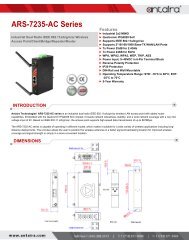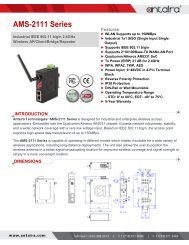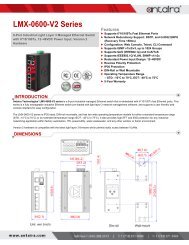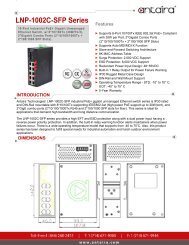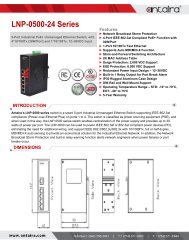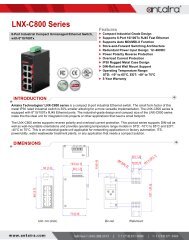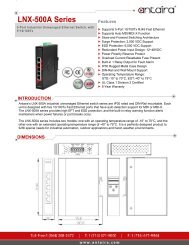IDEM Product CATALOG
IDEM Safety Switches Product Catalog - PCC US Distributor of IDEM
IDEM Safety Switches Product Catalog - PCC US Distributor of IDEM
You also want an ePaper? Increase the reach of your titles
YUMPU automatically turns print PDFs into web optimized ePapers that Google loves.
SECTION 28<br />
SKORPION Trapped Key Interlocking with Key Exchange<br />
THE SKORPION RANGE - AVAILABLE IN STAINLESS STEEL 316 OR DIE CAST:<br />
ISOLATION KEY EXCHANGE INTERLOCKING<br />
www.idemsafety.com SKORPION TRAPPED KEY SYSTEM<br />
254<br />
ISB1<br />
PRODUCT OVERVIEW:<br />
The SKORPION Trapped Key System has been developed to provide extremely robust<br />
mechanical coded key safeguarding and interlocking for hazardous machinery.<br />
The system works on the principle of releasing factory coded mechanical keys in a predetermined<br />
sequence to ensure machine power is isolated before any access can be gained<br />
to hazardous or dangerous machinery.<br />
After the machine control has been isolated (first key turned in the system) the key from the<br />
isolator can then be used to release other trapped keys to enable access to the guarded<br />
areas.<br />
After release of the first key (power isolation) safeguarding can be achieved without the need<br />
for electrical wiring, this makes the system ideal for use in harsh environments.<br />
When used in conjunction with interlock sensing they can be used to achieve up to PLe/Cat4<br />
to ISO13849-1.<br />
APPLICATION:<br />
A trapped-key guarding system relies upon the transfer of keys between a power isolation switch (or control<br />
switch) and a locking mechanism fixed on a guard.<br />
The essential feature of the system is that a removable key is trapped either in the guard lock, or in the<br />
power isolation switch. The lock on the guard is arranged so that the key can be released only when the<br />
guard has been closed and locked. This allows transfer of the key from the guard to the power isolation<br />
switch.<br />
Closing the switch traps the key, so that it cannot be removed while the switch is in the ON position.<br />
If there is more than one source of power, and therefore more than one circuit breaking element to be<br />
actuated, then a key-exchange box is necessary, to which all keys have to be transferred and locked in<br />
before the access key, which is of a different coding, can be released for transfer to the guard lock.<br />
Where there is more than one guard, the exchange box will accommodate an equivalent number of access<br />
keys.<br />
Where a number of operations have to be carried out in a pre-determined definite sequence, then the<br />
transferable key is locked in and exchanged for a different one at each stage.<br />
ADVANTAGES:<br />
SS-KE-NS5 shown above<br />
Available with up to 10 Keys<br />
● No reduction of integrity due to the distance between movable guard and control system.<br />
● High mechanical integrity, robust fixings and holdings suitable for all types of guards.<br />
● Eliminates the need for electrical wiring to each movable guard.<br />
● Fully Stainless Steel 316 version is suitable when the movable guard is placed in harsh or hostile environments.<br />
● Suitable for CIP and SIP cleaning processes and can be high pressure hosed with detergents at high temperatures.<br />
● Can be used where the movable guard requires to be removed completely.<br />
● All keys are coded in the factory and it is virtually impossible to override the system.<br />
● A trapped key system provides a quick yet safe and reliable access to machinery.<br />
● Use of a trapped key system can also prevent shortcuts and enforce a logical set of procedures that need to be satisfied.<br />
● Until the isolator key is returned to its original position within the lock, there is no way to enable the machinery to be re-started.<br />
SS-TS<br />
SS-HS<br />
SS-BS








